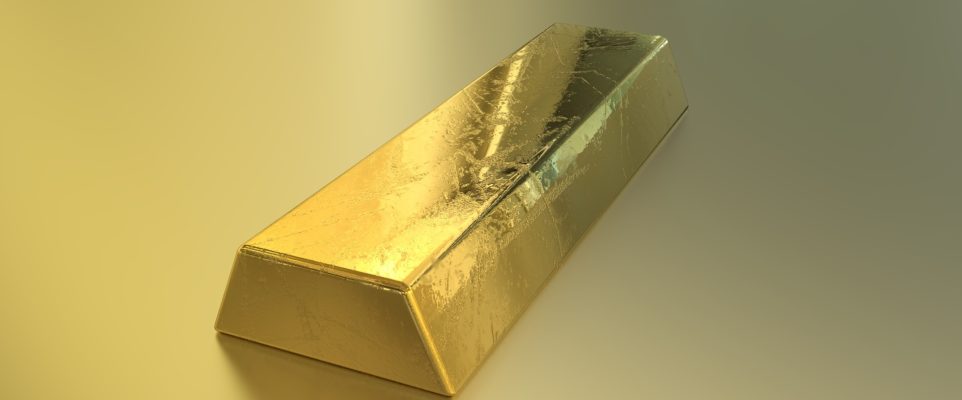Guide For 401k To Gold
How to Move 401k to Gold Without Penalty: A Guide
Everyone should be able to feel secure financially, and there are numerous ways to do so. Rolling over your 401(k) to a gold IRA is among the greatest ways to achieve this. You can make this kind of change without incurring any fines, and it enables you to safeguard your retirement savings. A transfer from a 401(k) to a gold IRA is a wonderful method to diversify your holdings. Rolling over your 401k to gold can give your retirement fund a beneficial addition that can help you safeguard your investments. A reliable asset like gold might assist you in achieving financial security. You can buy gold coins, bars, and other types of gold when you convert your 401(k) to a gold IRA. You may shield your investments from market volatility by making gold investments. Gold has a limited supply and its price has remained constant over time. Your 401(k) can be transferred easily to a gold IRA. You must complete the required documentation and locate an IRA custodian that specializes in gold investing. The money from your 401(k) will subsequently be transferred by the custodian to your gold IRA. There are many advantages to converting your 401(k) to a gold IRA. You can shield your retirement savings from inflation and market turbulence. Additionally, you can diversify your portfolio by adding a valuable asset that is unaffected by stock market fluctuations. Changing your 401(k) to a gold IRA is a great strategy to safeguard your retirement savings. You can transfer your 401(k) without incurring penalties to gold and benefit from the security of having a priceless asset in your portfolio. You can achieve financial security and mental tranquility with a 401(k) to gold IRA rollover.
A Precious Metals Ira Can Hold Various Forms Of Gold
Understanding the many kinds of gold that are generally held in a Precious Metals IRA is crucial if you’re thinking of rolling over your 401(k) into a Gold IRA. When it comes to purchasing gold through an IRA, there are a few distinct alternatives, including bullion, coins, and bars. One of the most popular forms of gold kept in a precious metals IRA is bullion. This refers to gold that is at least 99.5% pure, usually in the form of bars or ingots. Bullion might be a suitable alternative for investors searching for a long-term investment because it is priced according to its weight and purity. Another preferred choice for gold IRA investors is coins. Governments or private businesses may issue coins, which can range in purity and weight. The American Gold Eagle, Canadian Gold Maple Leaf, and South African Krugerrand are a few of the most well-liked gold coins for IRA investments. Bullion and bars are comparable, although bars are often bigger and heavier. They are frequently created by mints or refineries and can weigh anywhere from 1 gram and 400 ounces. For investors wishing to diversify their portfolio with gold investments, bars are a smart option because they are priced similarly to bullion depending on their weight and purity. The many kinds of gold that can be held in a Precious Metals IRA should be understood if you’re thinking about rolling over your 401(k) into a Gold IRA. Depending on your investment objectives and risk tolerance, you can choose between gold bars, coins, and bullion. Choosing the best gold investments for your needs might be made easier if you work with a trustworthy broker or custodian.
Knowing How To Roll Over A Gold Ira
For those who want to diversify their retirement portfolio, a Gold IRA rollover is a common investing option. The procedure is moving money into a self-directed IRA that only invests in physical gold from an existing retirement account, such as a 401(k) or traditional IRA. Investors must first decide on a trustworthy custodian with experience in precious metals IRAs before starting the rollover procedure for their Gold IRAs. The investor will need to start the money transfer from their existing retirement account to the new Gold IRA account after choosing a custodian. Usually, it takes a few weeks to finish this process. The investor can then choose the kinds of gold investments that best meet their retirement goals after the money have been transferred, in consultation with their custodian. This could apply to gold bars, coins, or bullion. The storage of the actual gold is a crucial factor to take into account when making an investment in a Gold IRA. To protect the security of the investor’s money, the custodian will often offer secure storage solutions, such as a depository. In general, a rollover into a gold IRA can be a good strategy to diversify a retirement portfolio and offer protection from market volatility. To create a successful investing strategy, extensive research and collaboration with a credible custodian are essential.
How Do 401(k)s Work?
Employers in the US can offer employees 401(k) retirement savings plans. It enables employees to make pre-tax contributions to a retirement account, which will grow tax-free until the employee reaches retirement age. Many businesses additionally provide matching contributions, which is the practice of matching a portion of the employee’s contribution up to a predetermined amount.
401(k) plans are by far the most well-liked kind of retirement savings plan, with 34.6% of Americans choosing to invest in them, according to the United States Census Bureau.
Is Gold Purchasable With A 401(k)?
Employee-sponsored 401(k) plans often provide a small range of assets that are unsuitable for investors looking to invest in gold. Although there may be a gold 401(k) plan available to you, this does not guarantee that you will be making a direct investment in gold itself. Direct investments in physical gold are very different from other assets with the word “gold” in their name.
A Precious Metals IRA or a Gold IRA may be the answer you’re looking for if you want to invest in genuine gold while also making tax-deductible contributions to your retirement account.
What Are the 401(k) Contribution Limits?
Planning for your retirement savings requires that you have a thorough understanding of the 401(k) contribution restrictions. Every year, the IRS reviews and adjusts these caps. Here are the updated 401(k) contribution caps as of 2023.
For employees: The maximum contribution per employee for 2022 was $20,500, and it rose to $22,500 for 2023. If an employee has more than one 401(k) account, this contribution cap applies to the combined contributions made to all of those accounts and covers both regular and Roth 401(k) contributions made after taxes.
Employers: The employer contribution cap is computed in addition to employee contributions. The total contribution cap for 2022 was $61,000. This cap was raised to $66,000 in 2023.
Catch-up contributions: To speed up their retirement savings, employees 50 years of age and older are permitted to increase their 401(k) contributions. The $6,500 catch-up contribution cap for 2022. The catch-up contribution cap has been raised to $7,500 as of 2023.
How Should Gold Be Stored in a 401(k) or Ira?
To secure your retirement assets, you must collaborate with knowledgeable, dependable experts who have a history of abiding by financial laws and regulations.
We at Birch Gold Group recognize the value of openness and reliability when it comes to investing in precious metals. We thus take all necessary measures to guarantee the security of your assets and your complete awareness of the procedure.
You can be sure that your gold is safe when you engage with Birch Gold Group. We collaborate with the top custodians and depositories in the market, who are completely governed to safeguard your valuables.
To make sure everything runs well, our skilled custodians manage the legal and administrative aspects of operating your Precious Metals IRA. You won’t have to give annual audits, reports, and filings a second thought, and you won’t have to constantly monitor changes in the law. Your only decision will be whether to keep the assets or acquire more. Your custodian will take care of all the paperwork associated with your IRA and make sure you stay clear of the dangers that have cost many their hard-earned retirement funds.

